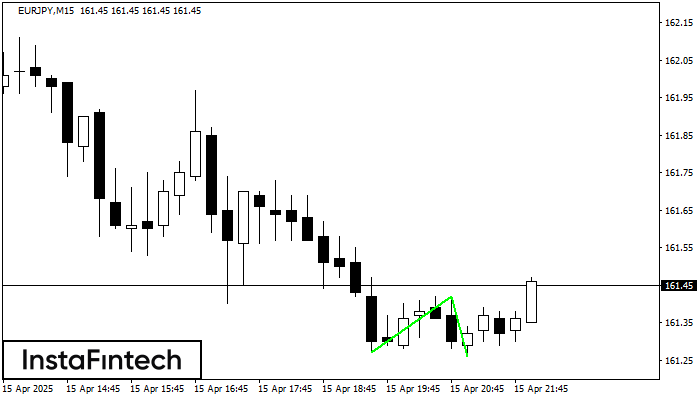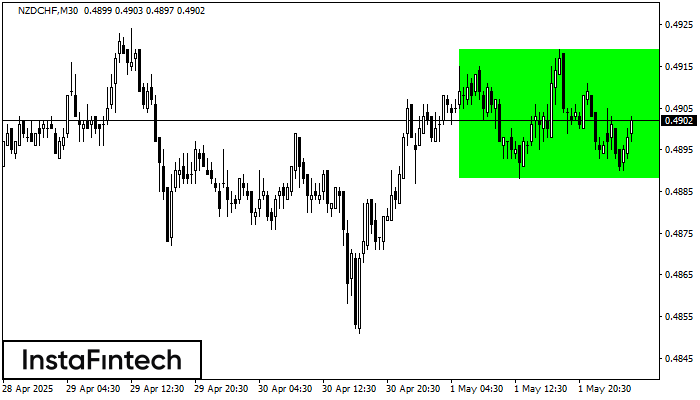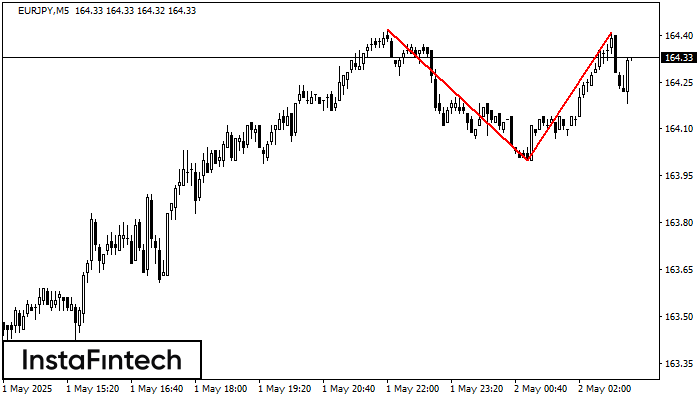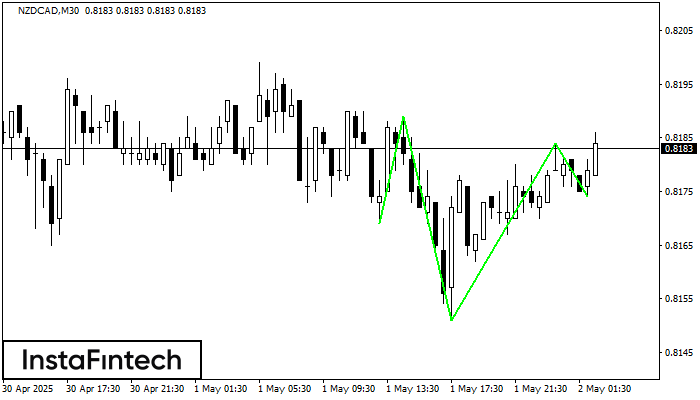Double Bottom
was formed on 15.04 at 21:15:37 (UTC+0)
signal strength 2 of 5

The Double Bottom pattern has been formed on EURJPY M15; the upper boundary is 161.42; the lower boundary is 161.26. The width of the pattern is 15 points. In case of a break of the upper boundary 161.42, a change in the trend can be predicted where the width of the pattern will coincide with the distance to a possible take profit level.
The M5 and M15 time frames may have more false entry points.
Vea asimismo
- All
- All
- Bearish Rectangle
- Bearish Symmetrical Triangle
- Bearish Symmetrical Triangle
- Bullish Rectangle
- Double Top
- Double Top
- Triple Bottom
- Triple Bottom
- Triple Top
- Triple Top
- All
- All
- Buy
- Sale
- All
- 1
- 2
- 3
- 4
- 5
Rectángulo Alcista
was formed on 02.05 at 02:17:39 (UTC+0)
signal strength 3 of 5
Según el gráfico de M30, NZDCHF formó el Rectángulo Alcista que es un patrón de la continuación de una tendencia. El patrón está contenido dentro de los siguientes límites
Open chart in a new window
Doble Techo
was formed on 02.05 at 02:05:35 (UTC+0)
signal strength 1 of 5
El patrón Doble Techo ha sido formado en EURJPY M5. Esto señala que la tendencia ha sido cambiada de alcista a bajista. Probablemente, si la base del patrón 164.00
Los marcos de tiempo M5 y M15 pueden tener más puntos de entrada falsos.
Open chart in a new window
Cabeza y Hombros Inverso
was formed on 02.05 at 02:00:07 (UTC+0)
signal strength 3 of 5
Según el gráfico de M30, NZDCAD formó el patrón Cabeza y Hombros Inverso. El techo de la Cabeza está establecido en 0.8184 mientras la línea media del Cuello se encuentra
Open chart in a new window




















